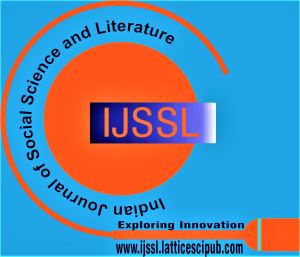![]()
Performance of Idolmaking: Intersection of Caste, Tradition and Space Among Mritshilpis of Kumartuli
Sagnik Chakraborty
Sagnik Chakraborty, Post-Graduate Student, Department of Sociology, Jadavpur University, Kolkata (West Bengal), India.
Manuscript received on 17 January 2025 | First Revised Manuscript received on 25 January 2025 | Second Revised Manuscript received on 16 May 2025 | Manuscript Accepted on 15 June 2025 | Manuscript published on 30 June 2025 | PP: 1-11 | Volume-4 Issue-4, June 2025 | Retrieval Number: 100.1/ijssl.C115904030325 | DOI: 10.54105/ijssl.C1159.04040625
Open Access | Ethics and Policies | Cite | Zenodo | OJS | Indexing and Abstracting
© The Authors. Published by Lattice Science Publication (LSP). This is an open-access article under the CC-BY-NC-ND license (http://creativecommons.org/licenses/by-nc-nd/4.0/)
Abstract: Kumartuli, an artisanal neighbourhood in North Kolkata, is home to custodians of the intricate idol-making craft, which has been primarily passed down through generations as a form of heritage and knowledge. The craft, practised by the Kumbhars (potter), represents a dynamic interplay of heritage and innovation, mediated by the locality’s socio-cultural aesthetics and spatial fabric. Various anthropological studies have attempted to visualise Kumartuli as a locality, situated at the rich intersection of culture, aesthetics, and art, drawing a connection between the ecologies of work and ritual practices prevalent within the community structure. The community lies at the intersection of deep-rooted caste structures and struggles to preserve the sustainability of the craft in the current scenario of iconographic processuals. This paper attempts to analyse the lived experiences of idol makers, drawing on the convergence of caste as a form of social capital and folklore, which embodies oral history and space as a manifestation of social construct. Through qualitative interviews, this paper explores how individual idol makers navigate the complex intersection of cultural and religious symbolisms that shape their process of identity formation in the day-to-day schema of life.
Keywords: Caste, Folklore, Identity Formation, Idol Makers, Lived Experiences, Space, Unstructured Interviews.
Scope of the Article: Sociology
